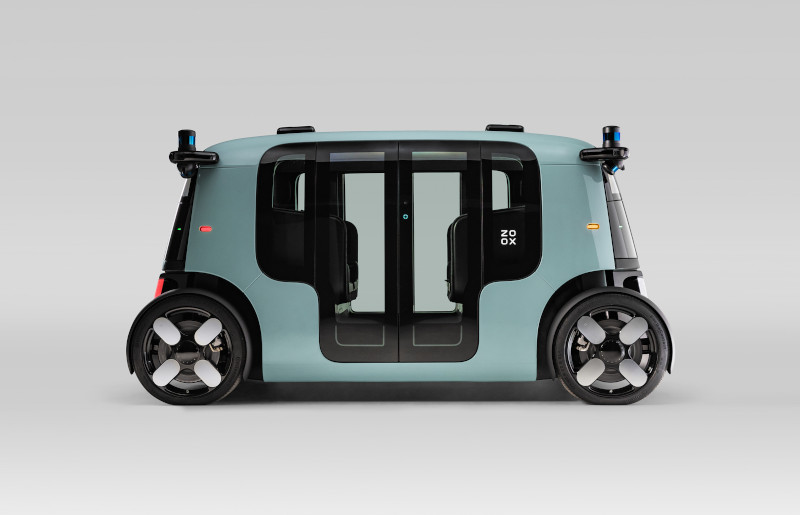 EMERGING TECH
EMERGING TECH
 EMERGING TECH
EMERGING TECH
 EMERGING TECH
EMERGING TECH
Amazon.com Inc.’s Zoox unit has pulled back the curtains on a homegrown self-driving taxi that can cover up to 75 miles an hour and drive more than half a day on a single battery charge.
Foster City, California-based Zoox was acquired by Amazon earlier this year in a deal reportedly worth $1.2 billion. The online retail and technology giant at the time provided few details about its plans for the acquisition. Those plans, it now seems, include building autonomous passenger vehicles.
The self-driving taxi (pictured) debuted by Zoox this morning is about 12 feet long, has no steering wheel and can seat four passengers. A specially developed airbag system is attached to each seat. Under the hood, an artificial intelligence driving system pilots the taxi with the help of road data collected by lidar sensors, radars and cameras placed on the vehicle’s exterior.
Zoox says the vehicle is well-suited to operating in dense urban environments thanks to a four-wheel steering capability that allows it to change direction without turning around when navigating compact spaces. It also helps that the taxi is only 12 feet long, which the Amazon unit says represents “one of the smallest footprints in the automotive industry.”
Zoox is currently testing the vehicle in Foster City as well as San Francisco and Las Vegas. The unit’s announcement of the self-driving taxi states that it’s working to enable “rider-focused deployment of the Zoox vision for urban mobility,” suggesting it may eventually seek to make its taxis available to consumers.
Amazon has a long track record of successfully entering new markets across segments as varied as cloud computing and smart home electronics. If the company decides to jump into the nascent autonomous ride-hailing industry, the move could create more competition for existing players such as Alphabet Inc.’s Waymo division.
In the long term, Amazon may have an opportunity to apply Zoox’s autonomous driving technology to other areas besides ride-hailing. The company has reportedly experimented with using self-driving trucks to carry cargo and Zoox could help it expand the effort. Should Amazon move to grow its use of self-driving trucks, launching a ride-hailing service could complement the strategy by giving the company an opportunity to refine its AI driving software through real-world use and collect valuable road data in the process.
Trucks and taxis aren’t the only focus of Amazon’s autonomous driving efforts. The company is also working on Scout, a six-wheeled package delivery robot small enough to travel on sidewalks that made its debut last year.
THANK YOU